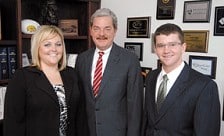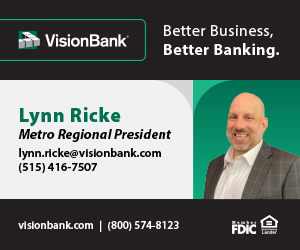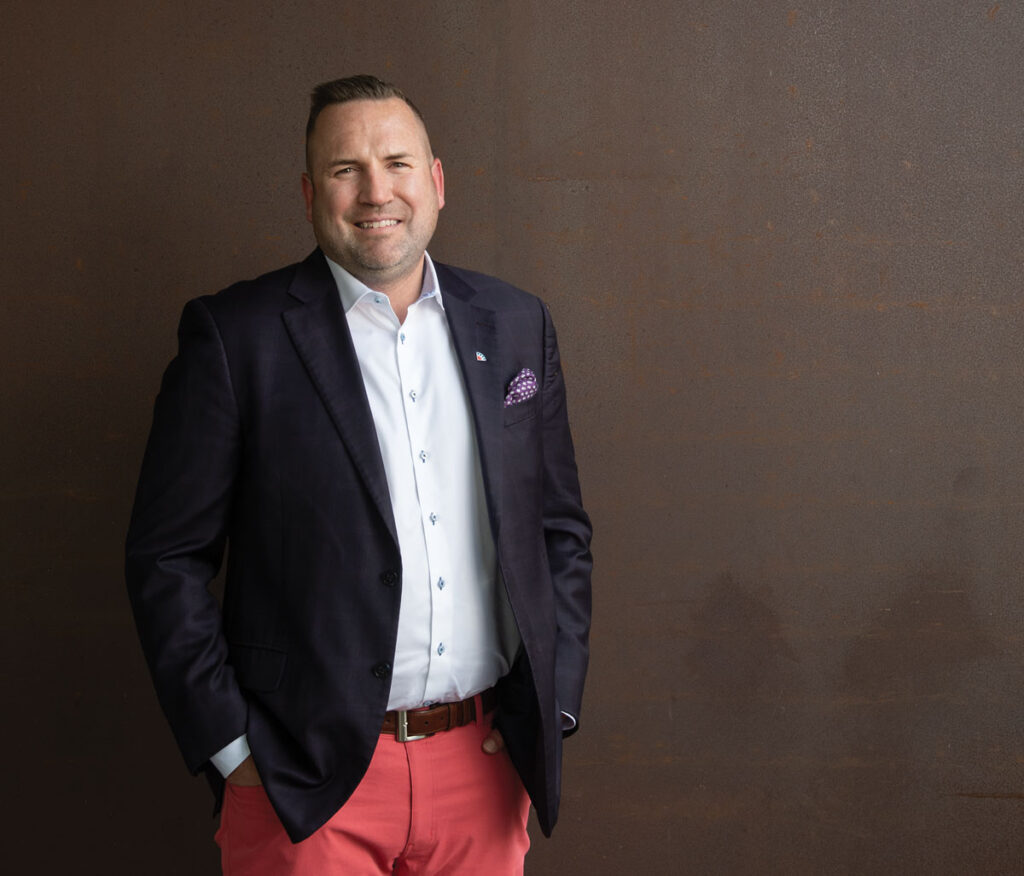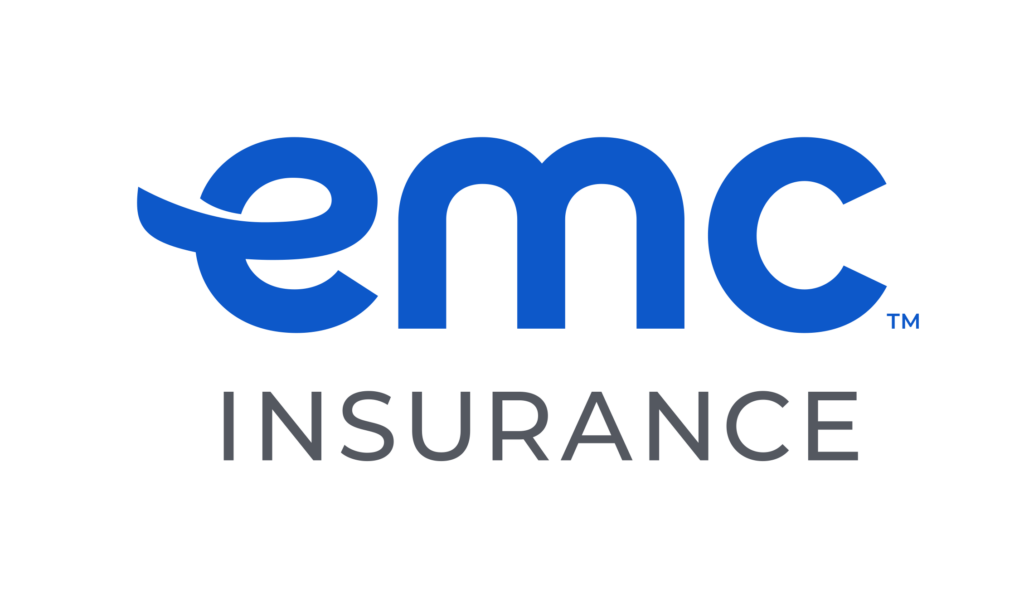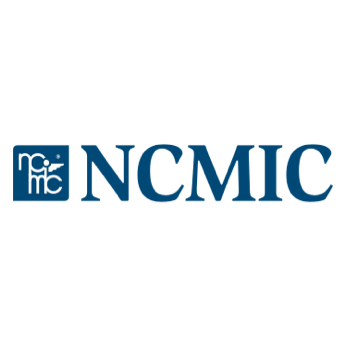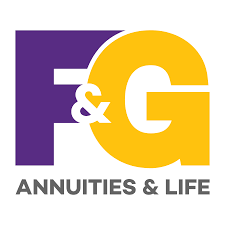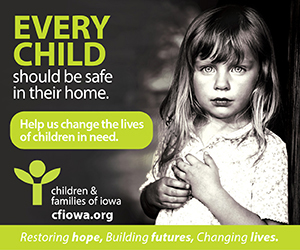Institute sows seeds for insurance industry’s future

Jon Raftis first heard about the Emmett J. Vaughan Institute of Risk Management and Insurance when he applied for an internship with a West Des Moines brokerage firm.
At the end of that interview, Raftis recalled, “the man who is now my boss put the Vaughan Institute brochure in front of me and said, ‘Go do this.’”
Raftis, who graduated last May from the University of Iowa, is now an account manager with that firm, Arthur J. Gallagher Risk Management Services Inc. He’s also one of 107 graduates of the university’s Henry B. Tippie College of Business who have earned the Risk Management and Insurance Certificate from the Vaughan Institute, which began offering the certificate program in 2006.
Golf links
Named for the late Emmett J. Vaughan, who established a highly regarded insurance education program at Iowa in the 1960s, the institute provides a critical talent pipeline for the risk-management and insurance industry, said Dana Ramundt, who spearheaded the effort to establish the institute.
“The actual roots of the institute go back further than the five years that students have been taking courses,” said Ramundt, president and CEO of The Dana Co., a West Des Moines insurance agency. The original insurance degree program at the university ended in the late 1980s.
Ramundt, who serves on a 10-member advisory board of insurance executives for the institute, also established a foundation and an annual golf outing in 2007. The event serves as a fund-raising mechanism for the institute and a networking event to connect its students with industry leaders.
During the golf outing last summer, 22 students distributed themselves at the tees to meet 82 insurance executives as they played a round, the largest attendance yet for the event, Ramundt said.
“I get thank-you notes saying, ‘I just hired this person, and if it hadn’t been for that event, I might never have met him or her,’” he said. “I can’t tell you how exciting that is.”
Among the institute’s graduates who now work in Greater Des Moines is Erin Wonsmos. The 2009 graduate was hired as a business analyst by The IMT Group, a West Des Moines-based property and casualty insurance company.
“I was looking at my options as I got into college, and I have a little insurance background in my family,” said Wonsmos, who joined the program in her sophomore year. “So it sparked my interest, and I haven’t looked back.”
In addition to completing the certificate program, Wonsmos was among seven students who chartered the Iowa chapter of Gamma Iota Sigma, a professional fraternity focusing on insurance, risk management and actuarial science.
Wonsmos said participating in the golf outing enabled her to connect with insurance executives, which helped her land two consecutive summer internships with Allied Insurance, a Des Moines-based subsidiary of Nationwide Mutual Insurance Co., and a job with IMT after she graduated.
Richard Keith, IMT’s president and CEO, said he’s particularly interested in helping Iowa graduates who have specialized in insurance to stay in the state. Additionally, “we found out her dad’s in insurance and actually writes some business for us, so that was interesting,” he said.
Keith, a Drake University graduate, noted that he had taught insurance classes as an adjunct professor at Drake for several years. However, that school’s insurance program, like Iowa’s, also ended, “so I was very excited to see the Vaughan Institute start,” he said. “It’s a very good program, and it’s growing. It’s getting better and better every year, so that’s a good sign.”
Will they come?
Larry Hershberger has served as the institute’s director since 2002. A 1966 Iowa alumnus, Hershberger retired in 2002 as a senior vice president with TIAA-CREF Individual & Institutional Services LLC after a 32-year career. A New Jersey resident, Hershberger said he travels regularly to Iowa City and handles many of his duties electronically. Both he and Ramundt studied under Vaughan as Iowa students.
“As we were starting (the institute) back in 2002, 2003, we said there seems to be a need for this kind of program because Iowa is such a prominent insurance state,” Hershberger said. “But there was always the question – what if we have this institute and nobody comes? So it really took a lot of groundwork to get the word out within the Tippie College of Business, the university and in the industry itself.”
This semester, 56 students are enrolled in the certificate program, and last year a total of 84 certificate candidates were in the program.
Hershberger said he’s pleased with the numbers.
“We were orginally thinking that if we could get back to where the program was in the ’70s and ’80s and have maybe 30 or 35 students, that would be great,” he said.
To receive the certificate, non-finance majors must complete 24 credit hours. Actuarial science majors are required to complete 21 hours, and finance majors typically can finish the program by completing 15 credit hours.
The program’s emphasis on risk management reflects the emergence of that specialty in the wake of the corporate scandals in the early 2000s, as well as the more recent financial crisis of 2008, Hershberger said.
Though it’s not uncommon for universities to offer insurance programs, “I think the emphasis is different than what it was a few years ago because of the emergence of risk management as a discipline within insurance curriculums,” he said. “Also, risk management has achieved a place of prominence in the business world.”
More offerings possible
Looking to the future, Hershberger said the institute will probably at some point need to add a second permanent faculty member. Offering courses online is also a possibility. The advisory board has also discussed offering some of the institute’s courses through Tippie’s M.B.A. program, or as an option for insurance professionals.
“We have had interest in offering the certificate as a professional designation, but we haven’t crossed that bridge yet and whether we will, it’s not clear,” he said.
The best testaments to the program’s success are the students who have graduated with certificates, he said.
“Now that they’re out there working in the industry, that’s where the rubber meets the road to see how qualified and bright and capable they are,” he said.

